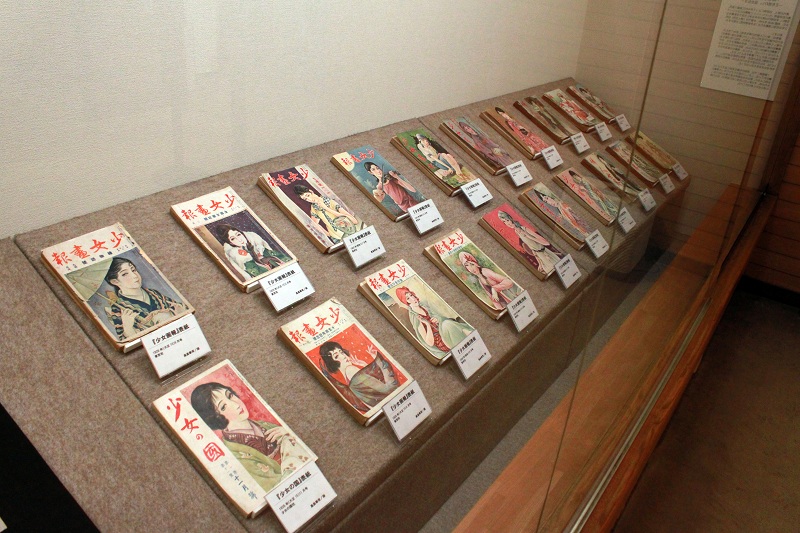Illustrating the Femme Fatale: Dangerous & Seductive Women in Taisho and Showa-Era Literature
- Published 2013.5.22
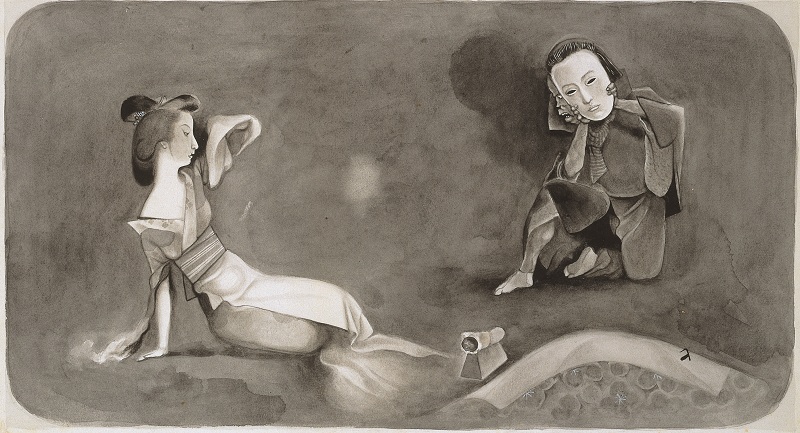
Glamour, seduction, moral turpitude ŌĆō these qualities characterise the femme fatale, who uses her feminine wiles to tempt lovers ŌĆō generally, men ŌĆō into danger and damnation. Though the term itself is French, depictions of beautiful, dangerous and wicked women appear in many other cultures, Japan included.
Tucked away in the tiny Yayoi Museum opposite Tokyo University is a gem of an exhibition starring these very women. The Taisho (1912 ŌĆō 1926) and early Showa years saw a proliferation of literary works, much of which was illustrated, dealing with both historical and contemporary femme fatales. In the approximately 400 pieces on display, we see a wide range of illustrators and their work ŌĆō not just their paintings, ink drawings and under-drawings; but also the illustrations that appear in novels, magazines and newspapers.
Characteristic of many Japanese museums is a tendency to engage in a Morellian categorization of stylistic traits of whatever art it is that is being exhibited. In the Yayoi Museum's case, there is a small section at the back of the first gallery which details the various "types" of femme fatale ŌĆō namely, for the purposes of this exhibition, "Those Who Seduce Men with their Beauty", "Women Destroyed by Love", "Women and Water" and "Mermaids". Given that these categories very often overlap with each other, it struck me as slightly superfluous. Of course, this in no way detracts from enjoying the illustrations.
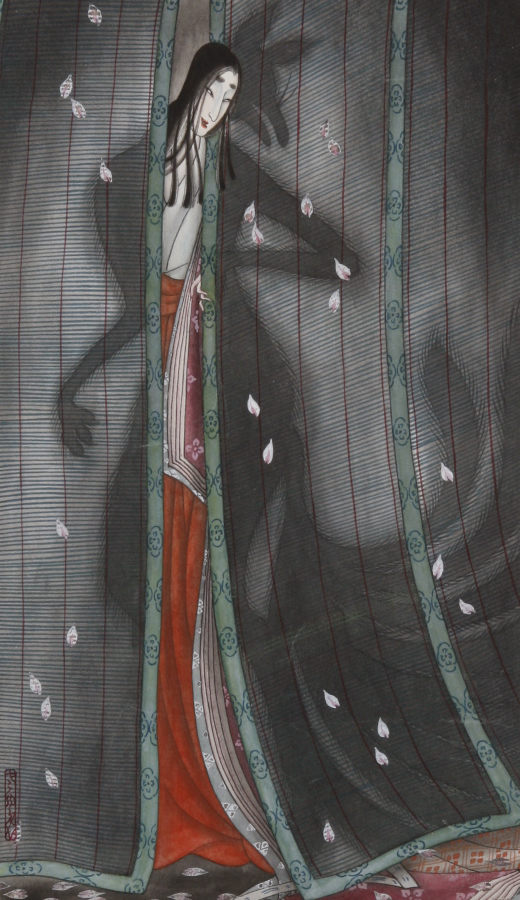
Accompanying the artworks are summaries and excerpts of the stories that they illustrated. In the first half of the exhibition, various interpretations of femme fatales feature common subjects from Japanese myth, history and legend. For instance, Tachibana Sayume's illustration of Tamamo no Mae features the fox, a common subject of Japanese folklore. Tachibana's interpretation features a tall, long-haired beauty partially visible between two curtains. Behind the curtains, we see her true body's silhouette ŌĆō a nine-tailed fox.
The story is modeled after historical figure Fujiwara Nariko, who adopted the title of Tamamo no Mae on becoming a consort to Emperor Toba during the Heian Period. Her true form is revealed to be a fox after an investigation into the cause of the Emperor's sickness, and she is banished from the court. Thereafter, Tamamo no Mae's soul is reincarnated over the course of three millennia in countries such as China and India, where she wreaks havoc in the royal courts.
Tachibana excels in tight, smaller-scale illustrations such as these, particularly in his ink illustrations that clearly draw on Japanese woodblock print tradition. Bold, fantastical and sometimes unsettling images of women prevail in his work ŌĆō engulfed by flames, being squeezed to death by snakes, or sleeping at a game of go while a sinuous, thing mass of snakes rise from their scalps. His Nihonga-style paintings, in comparison, tend to look rather ordinary and merely pretty.
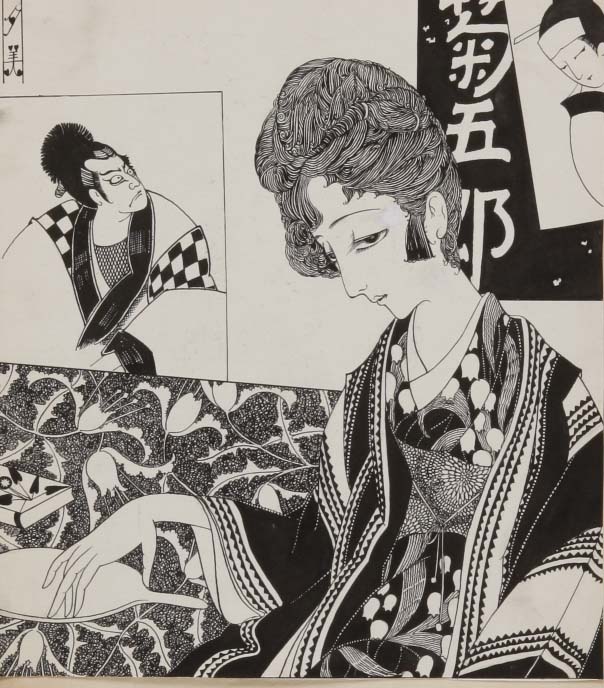
Indeed, the exhibition features many gorgeous ink illustrations, which will be a treat for fans of artists like Aubrey Beardsley, who was himself inspired by Japanese woodblock print tradition. Particularly striking examples can be seen in Nagoshi Kunisaburou andµ£łÕ▓ĪÕżĢńŠÄ's (reading unknown; most likely a pen name) works, which update the Japanese woodcut-style with a more Art Nouveau sensibility.
Thematically, the exhibition offers a fascinating glimpse into social perceptions of women during the Taisho and Showa eras. Why, for instance, the popularity of narratives of beautiful and wicked women? There seemed to have been a fascination with such women, and an accompanying, perverse sense of satisfaction when they met their comeuppance. In Edo-period story Yaoyaoshichi, for example, the 17-year old titular character falls in love with a man she meets at the temple the townspeople evacuated to when her house burns down. After her house is rebuilt, she can no longer meet him ŌĆō so she burns her house again in hopes that she will be able to meet him again. She is caught and punished for arson; in Tachibana's illustration she is being consumed by flames.
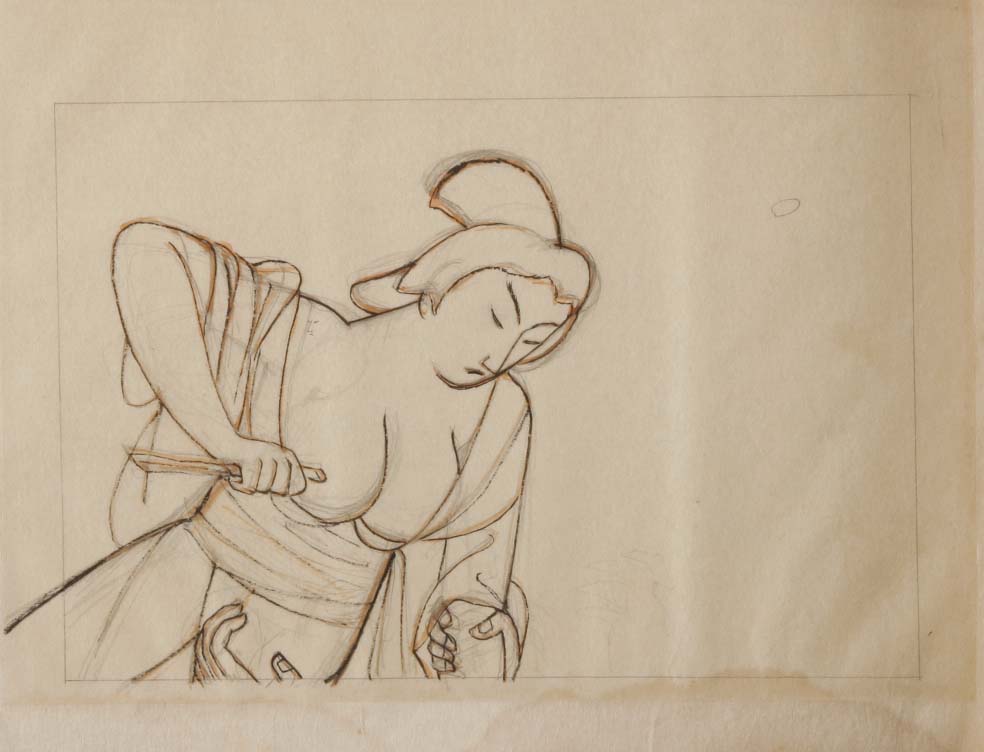
In the second gallery, we see 18 underdrawings by Komura Settai illustrating Oden's Hell (Oden Jigoku), a story serialized in the Yomiuri over a period of 9 months. Various reprints of the novel testify to the interest in reading fiction about women such as Oden, both seductress and murderess. Literary luminaries such as Natsume Soseki and Tanizaki Junichiro also wrote about femme fatales; in particular, Tanizaki's novel, Naomi ŌĆō illustrated by Yamana Ayao ŌĆō became a bestseller upon its publication in 1924.
Representations of femme fatales in this exhibition often overlap with those of moga (modern girls), the Japanese analogue to 1920s flappers. There was no small amount of hand-wringing by the older generation over the emergence of working-class women, who chose not to conform to the ideal of the quiet, obedient housewife ŌĆō holding jobs in cities, they lived alone, independent of any familial or employer influence; they also began to choose their partners. Though not all moga are femme fatales and vice versa, it is certainly possible to interpret the increasing interest in and portrayals of beautiful and dangerous women as a partial reaction to that phenomenon.
Despite its modest size ŌĆō a small, three-story brick building ŌĆō the Yayoi Museum has put together an exhibition that should be on anyone's list of to-go places. There is much to digest, particularly if you can read Japanese and are acquainted with the literary works involved. Even if you can't ŌĆō there are no English captions, unfortunately ŌĆō it is very worth going for fans of Art Nouveau and book illustration. As a bonus, the entry fee also gains you entrance to its sister museum, the Takehisa Yumeji Museum.
Femme-Fatales - Dangerous & Seductive Women in Taisho and Showa-Era Literature
Yayoi Museum, 2-4-3 Yayoi, Bunkyo-ku
Runs until June 30 (Sunday)
10:00~17:00 (Last entry: 30 minutes before closing)
Adults: 900 yen; senior high school/university students: 800 yen; junior high school student/younger: 400 yen

